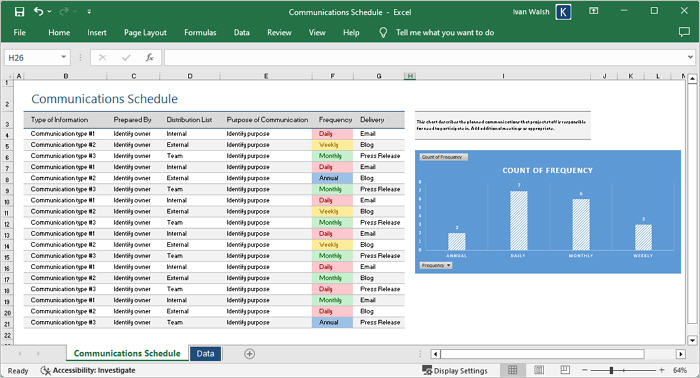Technical Writing
NEW – Continuity of Operations Plan Templates
This week we published a new Continuity of Operations Plan template pack. This provides a strategic plan to keep your operations running smoothly during emergencies.
Here are three key benefits of using the Continuity of Operations Plan (COOP) templates:
- Planning: The templates provide a structured framework that simplifies the complex process of creating a continuity plan. By following the predefined sections and guidelines, you can identify critical functions, assess risks, and outline recovery strategies, reducing the time and effort to develop a plan from scratch.
- Preparedness: With detailed instructions on roles, responsibilities, and response actions, these templates ensure team members are clear on their tasks during an incident. This clarity enhances organizational readiness, enabling a more coordinated responses to disruptions, which can significantly reduce the impact on operations.
- Compliance: The templates help maintain consistency across all documentation and processes related to business continuity, such as SOC2 audit requirements. They ensure that every aspect of the plan meets industry standards and regulatory requirements, supporting compliance efforts and providing a thorough approach to business resilience.
Writing Continuity of Operations Plan (COOP) documents
In general, COOP documents are typically developed under several circumstances, each aimed at ensuring your business can maintain or quickly resume critical functions when a disruption occurs.
Here are some common timings for writing up COOP documents:
- During the Initial Planning Phase: Organizations often develop COOP documents as part of their initial strategic planning when setting up business continuity processes. This is crucial for organizations to be proactive rather than reactive in the face of potential disruptions.
- After Significant Organizational Changes: Changes such as mergers, acquisitions, significant growth, or restructuring can significantly affect operational processes. A COOP document may be revised or written anew to reflect these changes and ensure the continuity plan remains relevant and effective.
- Following an Audit: Regular reviews and audits of existing business continuity and disaster recovery plans can reveal gaps or outdated information. These insights often lead to the drafting of updated COOP documents to align with current best practices and organizational needs.
- After an Incident: Experiencing an actual disruption can expose weaknesses in current continuity plans. After such events, organizations typically update or rewrite their COOP documents to incorporate lessons learned and enhance future responses.
- Regulatory Compliance Requirements: For many industries, especially in finance, healthcare, and public services, regulatory bodies may require periodic updates to continuity plans to ensure compliance with new laws or regulations.
Writing up Business of Continuity documents is an ongoing process. It requires regular updates and revisions to adapt to new threats, technologies, and changes within the organization.
We’ve created the following templates to help you get started.
Contents
The template pack includes the following documents
MS Word
- 1 x Business of Continuity Template
- Page count: 33 pages
- Language: US English
MS Excel
The template pack includes the following spreadsheets.
Continuity of Operations individual spreadsheets:
- Communications Schedule
- Disaster Recovery Matrix
- Recovery Tasks
- Recovery Tests
- RPO and RTO Matrix
Continuity of Operations Toolkit
This Excel file contains the following spreadsheets:
- Risk Log
- Risk Register
- Risk Response Plan
- Status Report
- Checklist
- Document Plan
- Failure Analysis
- Questionnaire
- Contingency Plan Budget
Download the Continuity of Operations Templates here

